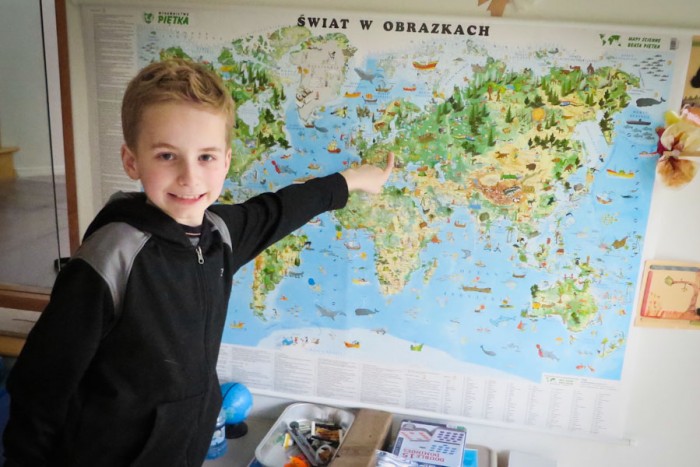
I notice with some satisfaction that about a third of the audience members have atlases stashed under their chairs. The corners are visibly dog-eared, bearing the scars of countless hours of idle exploration.
I have returned to an old haunt – Pacific Lutheran University in suburban Tacoma, home each March to the Washington state level of the National Geographic Bee.
Each year, millions of fourth-through-eighth graders from over 10,000 schools across the country take part in the Bee. Ultimately, only one will earn the national title and the $50,000 college scholarship that accompanies it.
Fourteen years ago, I was that student. For me, the Bee offered a way to channel my lifelong fascination with learning about the world. Today, I’m back at the state competition to find out whether a new generation still feels the thrill of geographic discovery.
The Bee endures despite the woeful state of geography education in the United States. The National Geographic Society developed the competition in 1989 in response to a survey that pegged the United States eleventh out of twelve developed countries in geographic literacy and revealed that one in seven Americans could not find the United States on an unmarked map.
An updated study in 2006 revealed not only an alarming lack of awareness (74% of young Americans wrongly believed that English is the planet’s most widely spoken language), but also an entrenched apathy (more than 70% of those surveyed insisted it is not necessary to know where countries in the news are located).
The students filling the auditorium today offer a refreshing counterpoint to these dismal statistics. They’re engaged with the world and eager to learn more about its places and cultures. But my conversations with them hint at the foundation of the larger problem: not one of the students I interview has taken a geography class in school. Although our education system purports to stress the value of understanding an increasingly interconnected world, geography is something these students do on their own time.
It was once a rare feat for a fourth grader to reach the state finals of the National Geographic Bee. This year, however, there has been a youth movement. Two fourth graders and two fifth graders have earned spots in the top ten, and they don’t appear to be intimidated by rivals with lowered voices and an extra foot in height.
One of the youngsters is Arthur Gwozdz from Newcastle. Although he is new to the competition and awed by the spectacle, he is buoyed by the knowledge that his fourth-grade classmates at Apollo Elementary in Renton are rooting for him from afar. He says he was “shocked” just to win his school’s bee in January.
Yet Arthur is hardly an unlikely finalist. He’s a first-rate map nut. The focal point of his family’s living room is a world map written in Polish, the native language of his parents. His coffee table is littered with geography books, and he takes an online geography quiz from the National Geographic Society every day.
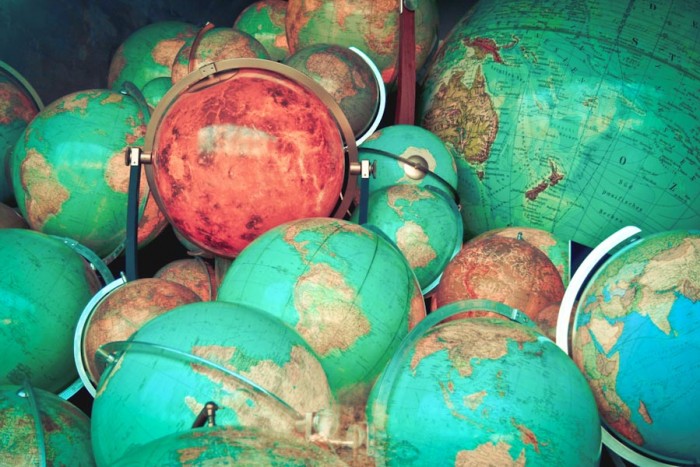
From the age of three, he recalls, one of his hobbies has been to spin a globe, stop it with his finger, and pretend that he lives wherever it lands. Any time he gets a free moment during school, he seeks out his classroom’s globe. A lifetime of globe spinning has prepared Arthur well; he has sailed through the Bee’s preliminary round with a score of seven out of eight.
To Arthur’s right is fellow finalist Jack Kidd, a fifth grader from Bothell who periodically calms his nerves by looking out at his beaming grandmother in the audience. Jack’s grandparents, who are avid sightseers, fostered his interest in geography by sending him postcards from their travels — though Jack, when pressed, sheepishly admits that this arrangement wasn’t entirely his grandparents’ idea.
“I demanded more postcards,” he says with a grin.
I remember what it was like to live a childhood of maps and globes, but one aspect of Jack’s experience is unique to the youth of the twenty-first century. Jack identifies his discovery of Google Earth three years ago as the catalyst that turned his love of geography into an obsession. He instantly felt the limitless potential of a program that lets him zoom in on any city in the world. His first reaction was to make a vow which, knowing Jack, hardly seems impossible: “I’m gonna go everywhere.”
In the state finals, however, the questions are stumping even the most enthusiastic participants. Arthur is the first to be eliminated, felled by a map question about a roller coaster in New Jersey. Jack follows three rounds later, when he is one of five contestants who fail to identify India as the country whose Kathiawar Peninsula is the only remaining range of the Asiatic lion. As the applause for Jack subsides and he rejoins his family in the audience, I notice that only one competitor has yet to miss a question: Bremerton fourth grader Jacob Krell.
After the competition, when I ask Jacob whether he has enjoyed geography for a long time, his entire family laughs at me. Apparently, I have posed a silly question.
At home, Jacob has converted his bedroom into a geographer’s paradise, which helps save time on his morning routine. “I have a map of the United States directly behind my bed and a world map directly to the side,” he explains, “so I can wake up, turn on the lamp, turn around, and look at maps.”
I tell Jacob that I used to sleep on the bottom bunk of a bunk bed so that I could have a map right above my head. He acknowledges that this is a good idea. When I add that I also put a map opposite the toilet, his eyes begin to glow in recognition of the possibilities. “Otherwise, it’s just wasted time,” I tell him, and he readily agrees.
Jacob’s younger sister jumps in to quell this discussion before it can get out of hand. She and Jacob share a bathroom, and she insists that she will never allow him to decorate it with maps. With her hands on her hips, she is defiant: “I don’t like geography.”
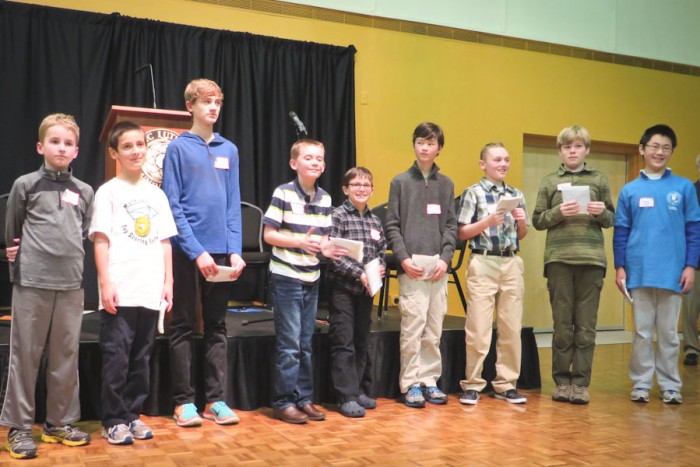
The ten finalists represent the full range of grades and hail from all over the state of Washington, but they share one trait in common: they are all boys. Since it began in 1989, one of the vexing mysteries of the National Geographic Bee has been the question of why girls are systematically underrepresented at every stage. In twenty-six years of the competition, only two girls have been crowned national champion. In the past decade, only nine girls have reached the national finals.
At this year’s Washington state bee, fifth grader Tessa Peterson of St. Catherine of Siena Parish School in Seattle has earned the title of top female participant. On the final question of a series of tiebreakers, Tessa was eliminated when she was unable to identify Belarus as the landlocked country that bordered both Lithuania and Ukraine. Instead of progressing to the ten-person final, she finished a heartbreaking eleventh.
Tessa is in high spirits as she watches the boys compete in the final. She is as much of a geography enthusiast as any of them, but she has come to the subject in a different way. Whereas Arthur, Jack, and Jacob are fascinated by maps, what appeals most to Tessa is the chance to learn about the world’s cultures.
“Geography isn’t just about where you are,” she asserts, and she’s right. In the preliminary rounds, she nailed questions about world foods, current events, and exotic animals. Representatives of the National Geographic Society are keen to emphasize the diversity of subjects the Bee covers, and they have found that questions about cultural geography and about animals appeal more to female participants than questions that focus solely on maps.
Bee organizers worry that the competition’s struggle to attract more girls has deeper roots. In 1995, the National Geographic Society commissioned a study from Pennsylvania State University professors Roger Downs and Lynn Liben to investigate why girls were not excelling in the Bee. Alarmingly, Downs and Liben observed a slight but noticeable tendency for boys to possess better spatial reasoning skills than girls. When selected over the course of many levels of competition, such a tiny difference could be magnified to produce the stark disparities observed in the Bee’s top stages.
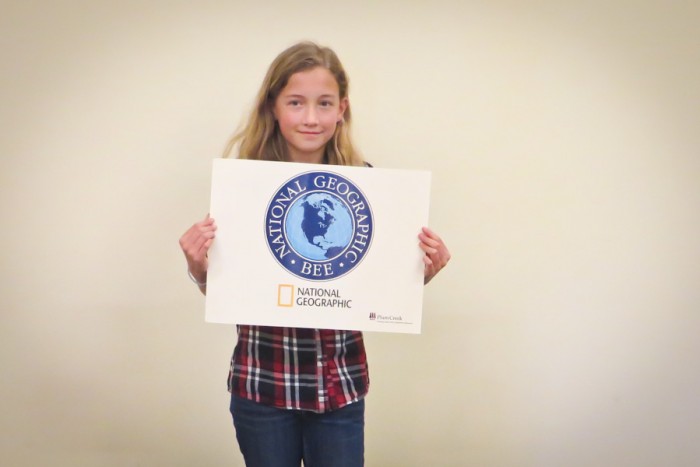
But the more immediate problem facing Bee organizers is the fact that some capable girls opt out of competing at all. It is relatively common for girls who have won in their school competitions to decline to continue to the state level, a venue with higher stakes, enhanced media coverage, and the promise of hundreds of strangers watching the proceedings from the audience.
For her part, Tessa is unfazed by the attention and unimpressed by the concerns about dwindling participation from her gender. But she does have a message for other girls who may not realize the appeal of geography: “If you like different cultures and you like traveling, and if you like learning new things, then you’ll like geography.”
Seattle eighth grader Marie O’Connell, who most appreciates geography as a way to help her understand what is going on in the world, shares a similar sentiment.
“Maybe some girls don’t feel it’s important in their lives,” she says of geography, but she has no doubt that it matters in hers. “It’s important to know where things are and what’s happening.”
As the competition continues, the finalists start to drop more quickly. By the eighth round, we are already down to our top three. Jacob has no trouble identifying Russia as the home of the Kremlin, preserving his perfect score. He is assured a spot in the top two when one of his competitors, seventh grader Evan Scavotto, is tripped up by a question about the Tiger’s Nest Monastery, which he mistakenly places in Nepal instead of Bhutan.
Nick Harrington, an eighth grader at Seattle’s Lakeside School, needs a correct answer to oust Evan and join Jacob in the championship round. He takes a deep breath as the moderator begins the question, which asks what gemstone resource accelerated the development of Kimberly, South Africa. Nick pauses to consider his answer, flashes a discreet smile, and says, “Diamonds.”
We have our final two.
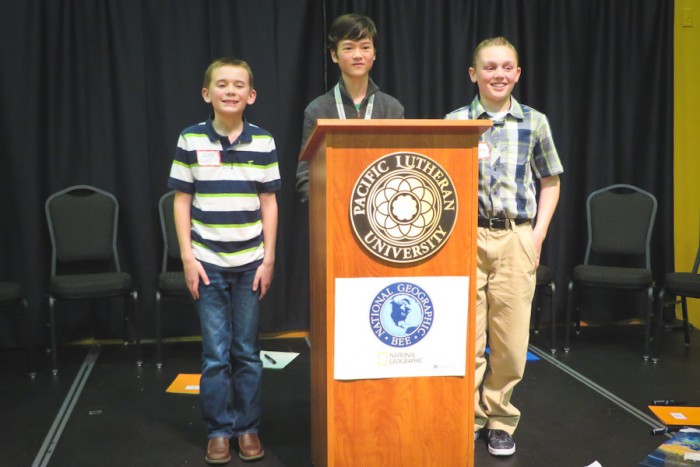
Fittingly, it’s a battle between age and youth. Jacob, the fourth grader who has yet to flub a question, sits ramrod straight in a chair that is slightly too big for him on one side of the stage. On the other, Nick lounges easily as he waits for the final few questions.
It is soon apparent that Jacob, at long last, has met his match. Nick vanquishes him by a score of two to nothing. The coup de grâce comes on another question about diamonds, this time asking which Belgian city on the Scheldt River is one of the world’s leading diamond cutting centers. Jacob guesses Bruges, but Nick supplies the correct answer of Antwerp.
Jacob does not seem disappointed to have come up just short. After a hug from his mother, he poses for photos with Evan and Nick. As the others smile, he strains to appear taller. On his face is a look of grim determination, and I can’t shake the feeling that he reminds me of a shark that has tasted its first blood.
Nick, meanwhile, is beginning to grasp the significance of his accomplishment. He smiles humbly at the throng of well-wishers as he juggles his winnings in his hands: a $100 check, a new National Geographic atlas, pages bearing contact information for television and newspaper interviews, and a packet of information about his upcoming trip to the national competition in Washington, DC.
Yet none of these prizes can top the validation of a lifelong interest in exploring the world. For Nick, winning the state level of the Bee is the culmination of his own journey of geographic discovery. He relates a familiar story. At the age of six, he started drawing maps. His specialty was drawing international boundaries. Today, he lovingly describes a house littered with scraps of paper, each bearing the outlines of a different country, sketched roughly in a child’s hand.
I’m struck by the fact that, despite the reverence that the Bee’s competitors hold for the subject of geography, none is able to articulate its appeal. Echoing his peers, Nick doesn’t even venture a guess. “I don’t know,” he shrugs. “There’s something fun about it.”
All my life, I have been giving the same answer to what I know is an impossible question. And I know that the truth is that these students have never thought of geography as a hobby or an interest. Their connection to the subject is more visceral. For children with the imagination to look at a blank map and dream of the world it represents, caring about geography is simply part of who they are.


Having been through the competition yourself, you are obviously the person to cover the event. That having been said, you are to be congratulated for the quality of the writing and photography. In my own case, I did not know that Geography existed as a subject at the various levels through the Ph.D. I do not remember taking any purely geographic courses in public school. Very often it was part of a hodge podge of material under the heading of Social Studies. That did not prevent me from drawing my fist maps of our neighborhood showing the various short cuts when I was in the third grade. I was more inclined toward an interest in biology during my middle school and high school years. That interest was fostered by membership in The Junior Explorers Club, sponsored and conducted every Saturday at the New England Museum of Natural History in Boston. After coming home from military service in World War II, I seriously considered attending university in Massachusetts. I was inclined toward applied biology, particularly agronomy. This, I thought, was biology with a purpose. I could see people benefiting from research and practice in my efforts as an agronomist. I found myself working on a Ph.D. at Penn State after finishing a BS and an MS in agronomy at the University of Arizona. How and why Arizona, Is another story I will tell you another time. The main thing is that I had taken so many agronomy courses through my MS degree that I was having trouble finding appropriate courses to take at the right times. I talked it over with my adviser and he suggested looking over the catalog for courses that might be appropriate. I came across a course called "Geography of Agriculture" . It covered people, and the history of their movements around the world and their evolution from being hunter gatherers to the invention of agriculture. I went over to the Geography Department to talk to the chairman and to have a closer look at the text book being used in that course. The chairman suggested I take the text with me and read portions of interest. That did it, I found more of interest to me in that book than in any agronomy text. The chairman informed me that The Association of American Geographers was meeting in Philadelphia in the near future and that I might want to go along and sit in on some sessions. He also arranged for me to meet the Chairman of the school where he earned his Ph.D. It turned out to be Dr. Samuel Van Valkenburg of Clark University in Worcester Massachusetts. The rest, as they say, is history, including a Grant from the National Research
Council to do field work out side the United States for a year in Sri Lanka. I worked a second year for The Photographic Survey Corp. of Toronto, Canada, toured India and Nepal, and finished off with a low budget trip around the world for self and wife.
Council for a year
This is a really fine story…I was captivated by your describing the extent of the problem of ignorance about geography as well as the gender differences, and then the competition itself. I took a couple of days of the test on the National Geographic site…I will be returning to quiz myself some more. My own interest in the subject has been supported by a life where I have traveled to nearly 50 countries, some of them many multiple times.
Must meet Kyle Haddad-Fonda ASAP. We’ve never met but I gave him a memorable phone call 16 years ago.